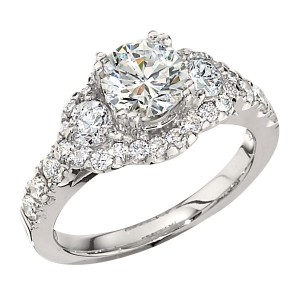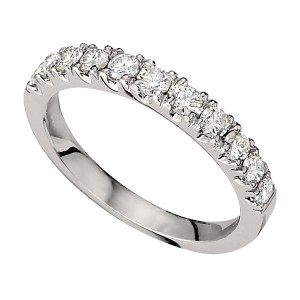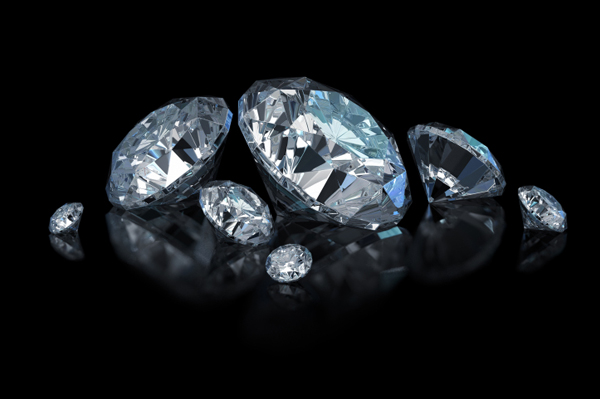If you’ve been collecting diamonds for a while, you know that the internet is chock full of advices on finding the most pretty and refined of all diamonds. All share more or less the same information, but where they differ is how they put the points across.
Although the advices are mostly sound, they lack the understanding required to connect with a serious buyer. This article from Jewelry Wise, however, has been so well-put that we recommend everybody read it at least once before making any major diamond purchase.
1. Cut
Experts agree, the diamond’s cut and polish are the most important considerations when it comes to its overall beauty. You’ve no doubt seen someone with a diamond ring that seems to be lit from within as it flashes with every move of the hand.

That flare comes from light reflecting off the exterior of the diamond, and from the light entering the diamond from the top and refracting off of the internal surfaces and coming back out. It’s called light return. Dispersion is the thing that creates the many colors you can see as the diamond moves.
Another factor affecting the light return is the symmetry of the diamond cut, as well as its polish. A well-made diamond with a great cut and polish will display more flashes of light and color than a diamond with same type of cut and an inferior polish job. Sometimes there’s a polish grade on a diamond certificate; sometimes there’s not. And there are certainly well-cut diamonds with excellent polish without certificates that can outshine their certified counterparts.
2. Shape
The cut isn’t the diamond shape. The cut creates the shape, but shape also plays a part in how bright and reflective your diamond is.
For maximum impact, a round diamond can’t be beat for shine and flash. The symmetry created by the round shape can reflect, refract and disperse almost all the available light (if the cut and polish are good). You may run into the term “round brilliant cut.” This cut has 58 facets and is generally agreed to create the best opportunity for great play of light in and out of the diamond.
Square and princess cuts are also popular shapes for engagement rings, and are available in brilliant cuts.
3. Color
There are degrees of color in a white diamond. The top grades go to colorless diamonds; then the amount of yellow tint grows as you get down the line in diamond color. To an extent, the less color in a diamond, the brighter and more spectacular the play of light will be.
A well-cut round diamond will most often give you more flexibility in the color — the cut somewhat masks small color differences. A square or princess cut may allow a bit of color to show at the corners.
4. Setting
The setting can affect how dazzling you diamond is, in or above the band, and which precious metal you choose can both work to enhance its radiance.
When considering how to set your center stone, bear in mind that a prong setting literally lifts the gem away from and above the band, letting in light from almost every angle and accentuating the diamond’s beauty. Though it may look like a delicate setting, platinum prongs are strong and secure.
The side stones in some bands can also help heighten the overall spectacular look of a ring, especially the many tiny diamonds of a pavé or other invisible setting. A halo setting can also maximize the diamond look by surrounding the center stone with a ring of smaller diamonds.

White metals can accentuate the bright white look of a diamond. A matte finish allows the diamond to take center stage while a shiny finish makes maximum impact. On the other end of the spectrum, yellow gold adds an element of warmth (and a sense of tradition) to an engagement ring.
5. Trust a pro
There’s nothing that will make your diamond engagement ring shopping easier than the help of the experienced professionals in a jewelry store. They can walk you through the 4Cs, and show you different diamonds and styles and settings.
Buy high quality jewelry and GIA-certified loose diamonds at Ware Jewelers available in and around Auburn, Opelika, Montgomery, Spanish Fort in Alabama location. Visit our blog to learn more.

